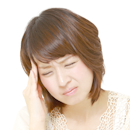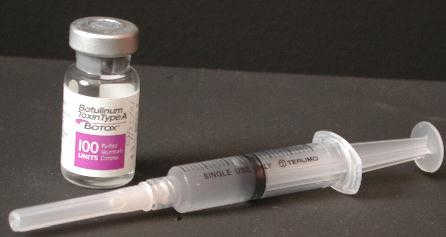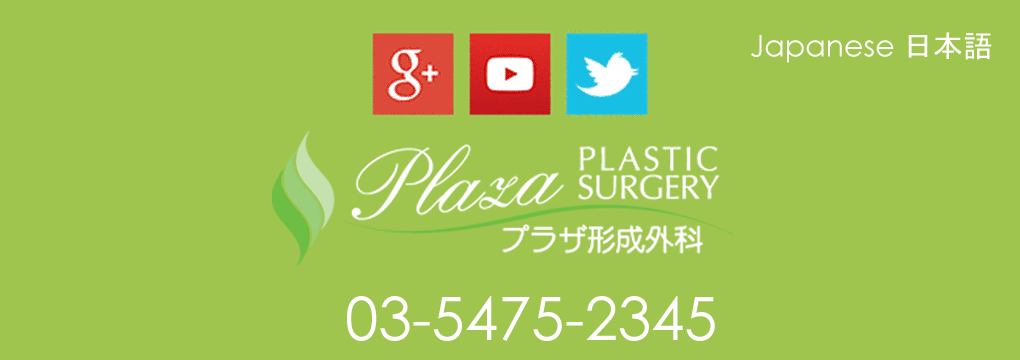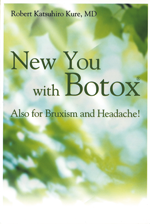HEADACHES & BOTOX
Botox for Migraine Headaches
 We now know the fact that a considerable number of patients who have been receiving Botox treatments for cosmetic purposes have claimed to be cured of obstinate migraine headaches and other types of headaches, almost coincidentally. Initially no one knew why such a phenomenon occurred, because a migraine headache was believed to be caused by problems in the membrane covering the surface of the brain (membranous coverings) and the blood vessels in the brain. Several hypotheses have been proposed in recent years, and now there are movements to review the concepts and mechanisms of migraine headache, through Botox treatment.
We now know the fact that a considerable number of patients who have been receiving Botox treatments for cosmetic purposes have claimed to be cured of obstinate migraine headaches and other types of headaches, almost coincidentally. Initially no one knew why such a phenomenon occurred, because a migraine headache was believed to be caused by problems in the membrane covering the surface of the brain (membranous coverings) and the blood vessels in the brain. Several hypotheses have been proposed in recent years, and now there are movements to review the concepts and mechanisms of migraine headache, through Botox treatment.
Dr. Kure has completed residency in both neurosurgery and plastic surgery in the united states, and has been impressed by the wonderful effects of Botox on various occasions. He has treated many patients who used to receive the treatment for cosmetic purposes and eventually changed their purpose in seeing me to one involving the treatment for their headaches.
He is a physician who originally specialized in neuropathology and neurosurgery. In the past he has also examined many patients suffering from headaches. *Dr. Kure was formerly trained in neuroscience prior to the plastic surgery training, and he is board-certified in neuropathology (USA) and board-eligible in neurosurgery (USA). Because of such background, Dr. Kure also sees patients suffering from migraine headaches. He has been treating these patients with Botox.
We use the PREEMPT protocol and follow the FDA guideline for treatment of migraine headaches.
* To check Dr. Kure’s credentials regarding the neuroscience background, please check the following independent sites:
American Board of Medical Specialties (ABMS)
Neurosurgery residency alumni listing (year of 1998)*
The FDA approved Botox as a treatment for headaches in October 2010.
Botox treatment for the headaches start from 20,000 yen + tax.
Other applications of Botox: (click each line for more details)
Bruxism
The habit of grinding teeth is known as “bruxism.” According to a survey by Baylor University in the U.S., it is seen in more than 8% of the population, which means that there are huge numbers of patients. Looking at Japanese data, some report that more than 30 million people suffer from bruxism. Then, why does bruxism occur? What types of people does it occur with, and what are the consequences? A closely related symptom called “temporomandibular disorder,” which I will discuss later, is often observed among young women, but bruxism lacks rational symptoms in general and is seen in people with all kinds of occupations regardless of gender. It is said that many instances of bruxism occur during sleep due to occupational and/or social stresses, and that such people relieve the stress by grinding their teeth. There are also reports claiming that bruxism is often seen among heavy smokers and heavy coffee drinkers. There are cases of habitual bruxism, for example baseball players clenching teeth when swinging a bat, as well as those caused by abnormal teeth alignment.
The rational symptoms felt by some people include a dull feeling in the jaw or tensed jaw muscles (area under the ears) when getting up in the morning. However, in most cases bruxism is difficult to diagnose. If there is another person whose sleeps in the same room, such as a spouse, that person may point out objective symptoms such as rasping and crunching noise (called grinding) or a ticking noise (called tapping). If the conditions advance, not only can dental problems such as breaking and cracking of teeth occur but also the jaw joints may be affected, causing temporomandibular disorders (pain in the jaw, the mouth not opening easily, etc.). In some cases the problems are not limited to the jaw but also appear as pain in the neck or in the back of the head (a type of tension headache) or can be neurologically related to the apnea syndrome. As such, they should never be taken lightly. On the other hand, in the U.S. there are reports that many people who snore also gnash their teeth during sleep.
Conventional treatment techniques include wearing devices that prevent bruxism (e.g. a mouthpiece) and dental techniques such as orthodontics. They seem to be effective for significant percentages of patients, but there are still many patients who suffer from prolonged persistent symptoms. A method that uses Botox to treat patients for whom existing treatment techniques are not effective has been tried out lately in the U.S. and elsewhere. A neurology medicine group at Baylor University School of Medicine, as mentioned earlier, reported in a paper published in 2000 that they had treated 18 patients of persistent bruxism by injecting 25 to 100 units of Botox into the affected jaw muscles and, as a result, observed significant effects in all the patients. Extremely obstinate bruxism is also observed in patients with disorders of the brain, and the effects of Botox have been recognized in such cases. Similar reports are not published in the U.S. alone but also in Europe.
Given the treatment policy for bruxism, if such symptoms are suspected the author recommends that a dental surgeon perform the therapeutic treatment. If expected effects are not obtained or treatment with mouthpiece is intolerable, it may be a good idea to try Botox treatment performed by an experienced clinician.
TMJ pain (temporomandibular disorder)
Temporomandibular disorder is abbreviated as TMD. The cause of this disease is not limited to a single cause. It involves pain from the jaw to the face caused by problems in the muscles that constitute the jaw joints and/or surrounding muscles, and it is considerably difficult to cure because the causes vary.
It might also be caused by advanced bruxism as described above. TMD, which differs from bruxism, is often seen among women in their twenties and thirties, which is one of its key characteristics. For these reasons certain specialists point out problems in congenital jaw development and the jaw joints.
Since this disease is outside the specialties of us physicians (dental surgeons specialize in the disease), it is described only briefly in this site. Conventional medical treatments include the insertion of devices such as a mouthpiece and splint into the mouth or the use of a drug to reduce the tension of the muscles.
Botox seems to have the effect of relieving the symptoms, particularly when the problems are clearly caused by excessive tension of the muscles, among the various symptoms of TMD. A sufficient history of case studies has not yet been announced according to my research of American literature, so we cannot say anything decisive yet. However, we believe it is important for the patient who suspects such a condition to consult with a dental surgeon specializing in the temporomandibular disorder before any treatment is received.
Hyperhidrosis of underarm (over-sweating)
It was about the year 2000 that Botox started to be employed to treat hyperhidrosis of the underarm, but only in the past year or two has Botox treatment become known among the general public through trial and error in treatments (in the U.S.). There are two types of sweat glands in the underarm: one type is the apocrine gland, which is mainly related to odor; and the other is the eccrine gland, which is related to sweat. The former exists in large quantities around the hair roots, and the latter exists in slightly deeper layers and is involved in regulating body temperature (via sweating). For this reason the eccrine gland is closely associated with the autonomic nerves. The sympathetic nerves, in particular, control the secretion of sweat.
The symptoms of hyperhidrosis are observed with one in 100 people and involve conditions where a large and uncontrollable amount of sweat is secreted from the underarms and palms. Generally, it is said that the amount of sweat secreted is as much as ten times greater than normal people, which adversely affects one’s social life due to the staining of clothing, etc. In the past, various treatments were attempted, for example commercially available products containing aluminum chloride, which is believed to work for hyperhidrosis. However, the effects have been variable. Psychological treatments are also attempted in cases where the symptoms are caused by psychological factors. Also, if the symptoms are related to other diseases, for example obesity, menopausal syndrome, side effects of drugs (e.g. anti-psychotic agents), hormonal disorders (e.g. hypoglycemia, hypothyroidism) and neurological diseases (e.g. autonomic nerve disorder), it is of course necessary to treat the causes.
Surgical treatment techniques include the removal of sweat glands, but perfect effects cannot be obtained. Additionally, there is a technique called sympathectomy, which destroys the sympathetic nerve nodes. However, there is considerable difficulty in this procedure because it destroys the nerves adjacent to the spinal cord using a chest mirror, and severe side effects such as paralysis in other nerves, pupillary abnormalities called Horner syndrome and abnormal sweating in various parts of the body can occur.
In this sense, Botox could be called a breakthrough method that can control hyperhidrosis of the underarm in a period of four to six months, doing so with a high degree of safety. Several mechanisms are considered with respect to how Botox works for hyperhidrosis. It has been suggested that the nerve transmitter substance called acetylcholine is directly related, or that Botox influences other nerve transmitter substances at the endings of the autonomic nerves. In any case, it is interesting that the nerve toxin called Botox would be involved even with the regulation of sweat. Although there is little in the way of side effects, it is important to inject Botox exactly at the sweat glands, which are located between a deeper part of the skin (called the dermis) and the subdermal fat. Otherwise the expected effects will not be obtained. If injected too close to the surface of the skin, there is a possibility that Botox may not reach the endings of the neurons that control the sweat glands. Botox can control not only the hyperhidrosis of the underarm but also that of hands (palm), and feet.
Slenderizing the legs
Botox is used by some physicians as a treatment to slenderize the muscles in the calves. We no longer use this technique, however. Theoretically we can easily imagine that Botox would be effective, but the problem is the significantly large area occupied by the muscles in the calves. This means a large amount of Botox must be injected in order to obtain sufficient results.
In our opinion it is better not to use U.S.-made Botox in an amount exceeding 100 units per patient (the strength varies by the producer, even though it is the same botulinum toxin) in order to get good results, because the excessive use of Botox may cause problems over the entire body in some patients, such as a slight attack of fever as if one were sick with a cold, or generalized fatigue.
Special precautions should also be used when administering a large amount of Botox to a young female patient. Since Botox must not be used during pregnancy, the physician must ask the female patient about her condition, bearing in mind the possibility of beginning pregnancy, which is difficult to know, before considering such treatment.
Stiff neck and shoulders
Botox is also used to treat dystonia of the neck, the myofascial syndrome (a painful disease of the muscles and fascia), and whiplash syndrome. When explaining it this way, one might think I sound like an acupuncture specialist who claims that his needles are effective for every malady or condition.
However, we think that the acupuncturist’s needles and Botox work the same way in terms of their ultimate effects. In the case of needles, signals are sent from the peripheral nerves in order to control the gates of pain, but there is the shortcoming that the sustained duration is shorter than that provided by Botox. Moreover, Botox treatment uses extra-fine needles, which I believe are less painful than acupuncture treatment in general.
In any case Botox has been used for pain and stiffness of the neck and shoulders for many years now, and its effectiveness is proven. It is necessary to have the problem diagnosed properly by a medial specialist (neurology or neurosurgery) first before receiving treatment by a medical specialist experienced in Botox treatment. If the first diagnosis is wrong, not only will the expected treatment effects not be obtained, but the treatment will be risky as well.
Tennis elbow
This is a very common condition, but actually it is not related to the elbows themselves. The cause is the squeezing of the nerves by an abducent muscle called the supinator, which tightens up when the forearm is extended (extensor muscle) or rotated outward, or by inflammation of the tendons around the elbow.
In clinical reports in the U.S. and Europe, it is indicated that the symptoms have been alleviated in more than 50% of patients by injecting Botox into the muscles.
Piriformis syndrome
There is a location in the lower back, slightly above the bone that comes in touch with a chair when sitting down, where the sciatic nerves protrude from the pelvis. The piriformis muscle is the muscle that runs diagonally across the location from the center of the pelvis to the femur. If this muscle is swollen or excessively tense, it irritates the immediately adjacent sciatic nerves, causing tremendous pain. Patients who suspect low back problems may actually suffer from piriformis syndrome. Since accurate diagnosis may be difficult for an ordinary physician to make, it is first necessary to consult a medical specialist in neurosurgery, orthopedics (bones and muscles) or neurology.
Data obtained in the U.S. indicates that considerable effects can be obtained using Botox treatment in cases of piriformis syndrome.
Thoracic outlet syndrome
This syndrome is caused when the nerves and blood vessels are oppressed in the area extending from the chest to the neck, and it can occur for many reasons. Symptoms include numbness in the arms or the inability to lift the arms upward. A condition often seen as problematic is the one in which the scalenus muscle, which runs from the tibia to the os costale, oppresses the nerves that lead to the arm nearby. Diagnosis is very important and must be made by a medical specialist in neurosurgery or neurology.
Treatment using Botox is reported to be effective for thoracic outlet syndrome. Treatment must also be performed by a medical specialist, since it is necessary to inject precisely at the target muscle.
Phantom pain
Phantom pain refers to a condition where a patient whose leg has been amputated, for example, feels an acute pain running from the edge of the amputation to the (non-existing) toe. In this sense “phantom” means a ghost or illusion.
According to clinical data in the U.S., there are reports that pain and frequency of pain attacks in 60% to 80% of patients could be relieved by injecting Botox into the muscle located at the edge of amputation.
Gastrointestinal pain
I will explain this briefly before it is asked why we, plastic surgeons, would write about pain in the gastrointestinal system. In the U.S. and Europe, Botox is used to treat pain after operations of, for example, anal fissure and hemorrhoids, as well as Achalasia, a condition where the muscles of the digestive canal contract too much. Good results have been obtained in these cases.
Botox treatment now available in Tokyo
As you may know, Botox is a neurotoxin that paralyzes muscles. We utilize this mechanism to immobilize unnecessary motions of muscles in frown lines, forehead wrinkles, and so forth. It is done in a very controlled fashion, therefore the risks are minimal.
Although Botox injection is done with the smallest needle available in the market and not significantly uncomfortable, we provide local anesthesia, anesthesia cream, and ice application for those who are extremely sensitive.
It is done within a few minutes usually, and no follow-up is necessary. The average cost for frown lines is about 30,000 yen + tax.

The doctor will explain detailed applications of Botox currently known. Other indications include treatment of Migraine headache, TMJ pain, Hyperhydrosis (over-sweating from the armpits), Hyperactive neck muscles, and so forth.
Doctor’s Publication (a complementary copy is given to a new patient)
[top]
~Botox for Migraine Headaches in Hiroo, Tokyo~




